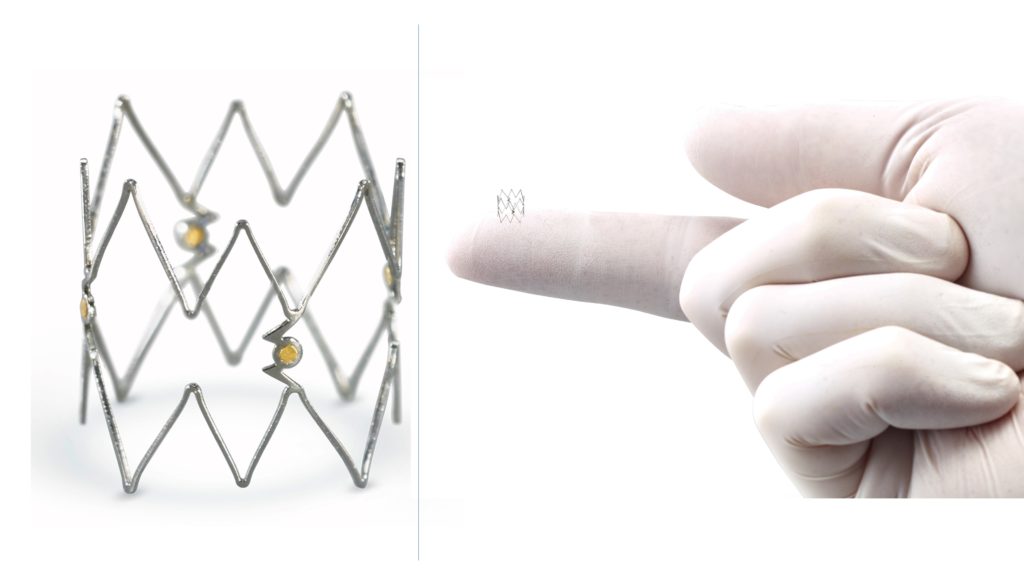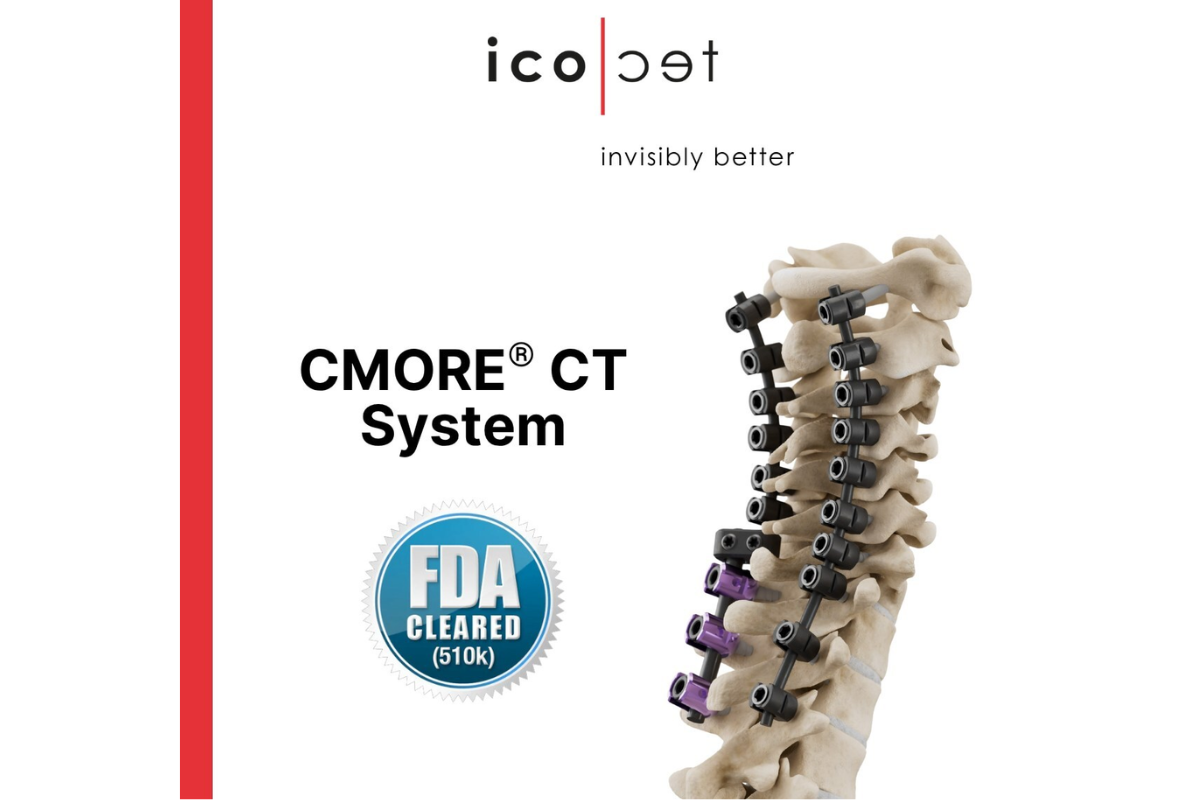The Philips Tack endovascular system is a specialized implantable device that can optimize the treatment of dissections in patients with critical limb ischemia. The Tack 4F implant shown above has adaptive sizing for vessel diameters of 1.5 to 4.5 mm.
Peripheral artery disease (PAD), infamously known as the “silent killer”, is a vascular ailment where the blood flow in the arteries of the arms and lower extremities is affected. PAD is characterized as a progressive disorder because the health of patients affected by PAD can deteriorate with time. More than 200 million people in the world are affected by PAD and one study determined that the all-cause mortality rate over ten years was 33.1 percent for PAD patients.
There are four distinct stages of PAD, namely, asymptomatic, claudication, critical limb ischemia and acute limb ischemia. The onset of PAD is often asymptomatic and mostly associated with people who have comorbidities such as hypertension, hyperlipidemia and diabetes mellitus. Claudication is the stage where the blood flow to the lower extremities is limited, leading to pain and discomfort which relieves after a rest period. Critical limb ischemia is the chronic and advanced phase of PAD and is distinguished by consistent pain and non-healing wounds such as gangrene and ulcers in one or both legs. At this stage, there is an extreme artery block in the lower extremities, and this may also lead to stroke, amputation of the affected limb or even vascular death.
Current Approaches for Critical Limb Ischemia Treatment
Conventional percutaneous transluminal angioplasty (PTA) is the widely used treatment method for critical limb ischemia due to iliac and infrainguinal arterial occlusive disease and it has proved to hold a high limb salvage rate. This technique involves the insertion of a flexible plastic tube or catheter that has a balloon into the blocked artery. The balloon is then inflated which leads to the opening of the blocked vessel and results in the restoration of the blood flow. Most patients are allowed to return home the day after this treatment.
One of the prominent downsides of PTA are the dissections or mechanical tear of the arterial wall that occurs due to the invasion of the balloon, and they are called post-PTA dissections. The dissections can negatively impact the angioplasty by further damaging the site of incision and obstructing the blood flow.
Several other healing techniques include drug-eluting stent technology (the drug is released into the blood vessel when the stent is inserted), atherectomy technology (a device is used to cut or vaporize the plaques in the artery), lithoplasty (sound waves are used to break the blockage), endovascular bypass technology (the blood vessels are reconnected to enable normal blood flow) and deep vein arterialization (arterial blood is shunted to the deep veins).
XTALKS WEBINAR: Adopt QMS Functionality in Under 30 Days
Live and On-Demand: Wednesday, June 29, 2022, at 11am EST (4pm BST/UK)
Register for this free webinar to learn the steps required for a 30-day quality management system (QMS) implementation. The featured speakers will discuss how life science manufacturers can now save time, money and resources and increase time to market by doing away with fully customized QMS solutions — while remaining compliant with industry regulations and standards.
Philips’ Quest to Optimize the Treatment of Dissections in Patients with Critical Limb Ischemia
Royal Philips has been researching and developing treatment for critical limb ischemia. In 2018, the commpany announced the Stellarex 0.014″ Drug-Coated Balloon for below-the-knee PTA. The balloon aids in efficient drug delivery at the clogged artery and this method has its advantages such as effective tissue residency and minimal particulate loss.
After three years of clinical research, Philips has announced that their Tack (4F) endovascular system has shown promising results for arterial dissection repair following balloon angioplasty in patients with critical limb ischemia. These results were collected from a three-year follow-up in the Tack Optimized Balloon Angioplasty (TOBA) II below-the-knee clinical trial.
The Tack Endovascular System (4F, 1.5-4.5mm) aids in the repair of post-PTA dissection(s) and is intended to be used in mid/distal popliteal, tibial and peroneal arteries that are 1.5 mm to 4.5 mm in diameter. The Tack endovascular system is an innovative technology and the first of its kind to acquire approval from the US Food and Drug Administration (FDA). The Tack 4F implant has the adaptive sizing property which enables it to resize itself according to the target vessel’s diameter thereby avoiding the injury of the affected arteries and conserving the healthy tissues around them.
Three-Year Follow-Up in the TOBA II Below-the-Knee Clinical Trial
For a period of three years, 233 patients at 41 international sites were involved in the TOBA II below-the-knee clinical trial. This clinical trial evaluated the efficacy and safety of post-angioplasty dissection repair using the Tack endovascular system in patients with critical limb ischemia and infrapopliteal disease.
The results of the three-year analysis of TOBA II indicated high limb salvage rate of 93.9 percent in patients with critical limb ischemia. There was 69.6 percent freedom from clinically-driven target lesion revascularization in all patients. The 36-month long trial period showed sustained improvement in patient-reported quality-of-life and mobility measures.
“In treating peripheral arterial disease below the knee with balloon angioplasty, dissections of the popliteal, tibial and peroneal arteries occur with considerable frequency,” said Chris Landon, business leader of Image Guided Therapy Devices at Philips in the company’s press release. “With the Tack endovascular system from Philips, interventionists can reliably repair below-the-knee arterial dissections — and in doing so, improve major amputation rates and quality of life.”
RELATED XTALKS WEBINAR: Clinical Trial Design and Considerations for Below-the-Knee Interventions and Amputation Prevention












Join or login to leave a comment
JOIN LOGIN